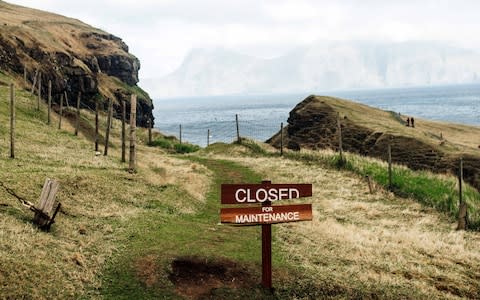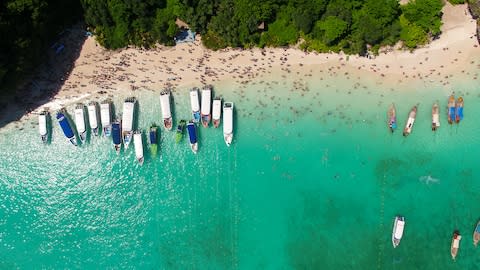The Faroe Islands to 'close for maintenance' in 2020

The Faroe Islands will close to the public for three days next year, in a bid to preserve its fragile ecosystem and protect itself from the effects of overtourism.
Just 100 volunteers will be allowed onto the islands from April 15–17 2020. In return for free accommodation, food and transport, they will take part in maintenance projects to help preserve the islands.
Fourteen tourist sites will be closed to the public, including Slættaratindur – the highest mountain in the Faroes. The last stretch of the walk is not currently safe, so a new route will be bolstered and signposted.
The Danish territory has seen a spike in tourist numbers in recent years. In 2013, 68,000 tourists made the trip here. Last year that figure reached 110,000 – over double the islands’ population of 51,312.
With two new hotels set to open in 2020, the number of tourist arrivals is expected to keep going up.

The Faroese tourist board decided to close the North Atlantic islands to the public earlier this year, following fears that the natural beauty of the islands could be ruined if action wasn’t taken.
Telegraph Travel’s Hugh Morris joined as a volunteer and helped to cut out a path to the summit of a peak called Klakkur.
“At first, we hacked at the earth with intention but no direction, but within 20 minutes we started to see more clearly our purpose,” he said. “Among us were students, an accountant, a computer engineer, a cartographer, and soon enough we found our rhythm.
“Within hours what felt at first like the result of aimless enthusiasm was transformed into an actual, functioning trail – one that would keep walkers on the straight and narrow, protecting the nature either side and transporting generations to come to a beauty spot that boasts 360-degree views across the north-east Faroes.”
Other projects this year will include marking paths with wayfinding posts, mending existing paths that have eroded, and re-building cairns. The workers will then celebrate with locals over a meal with Faroese food and dancing on the Friday night.
Last year more than 3,500 people applied for the ‘Closed for Maintenance, Open for Voluntourism’ pilot, which has doubled up as a marketing campaign to encourage future visitors to respect the Faroes’ delicate ecosystem.
While the Faroes is working to manage the early stages of a tourism boom (Tim Ecott, Telegraph Travel’s destination expert, says it is like “the best of the Lake District without the crowds”) neighbouring Iceland has struggled under the weight of its own popularity in recent years.
Around 3 million visitors came to Iceland in 2018 – ten times the population of the country – and the infrastructure has felt the strain in places, particularly in the capital of Reykjavik.
There have also been reports of poor behaviour on the island, including tourists carving messages into moss that will take decades to grow back, public urination, and people knocking on doors asking for free accommodation.
The popularity of Iceland has been put down to the high-profile eruption of Eyjafjallajökull in 2010, as well as its appearances in the hit HBO series Game of Thrones.
The country’s tourism board, Visit Iceland, has launched several initiatives to promote responsible behaviour by tourists, creating videos that warn of the fragility of the environment, and the need to stick to authorised tracks and heed the ubiquitous safety warnings.
Visitors are also now asked to take a tourism pledge. Explaining the initiative, Iceland’s Tourism Minister Þórdís Kolbrún R. Gylfadóttir said: “The type of people who come to Iceland want to be responsible tourists, it’s just that they aren’t always aware of what that entails. So as part of our welcome, we wanted to create a pledge which we’ll encourage all visitors to take, creating an army of people who know how to stay safe and also how to look after our delicate nature.”

The Faroe Islands isn’t the only place to have closed its doors to mitigate the impact of overtourism. Made famous by its appeareance in the 2000 film The Beach, Maya Bay in Thailand closed to the public in 2018 to allow its ecology to recover – a move which was extended to 2021 as the healing process needs more time.
In April 2018, the Philippines took a similarly drastic approach to overtourism on Boracay, an island at the heart of the archipelago nation which receives more visitors than it can cope with. The president Rodrigo Duterte closed it for six months to allow for a thorough clean-up operation. In October last year it reopened under strict new rules.
The team behind the Faroe Islands’ closure hopes that their project will inspire others to set up their own maintenance crews.
You can sign up to the Faroe Islands closed for maintenance project here – applications open at 3pm GMT on November 12.

